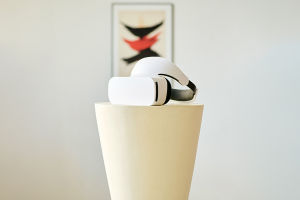Have you ever stood in front of a seemingly simple painting or design and felt a strong emotional pull, even though it used just a few shapes or colors? That's the magic of minimalism—an art form that shows how less can truly be more.
By paring down elements to their essentials, minimalism forces the viewer to focus, feel, and engage deeply with what remains.
Simplifying Elements to Amplify Impact
Minimalist art strips away everything unnecessary, leaving only the core forms and colors that communicate the artist's message. This reduction isn't about emptiness; it's about precision. Every shape, every hue carries meaning and intention.
By simplifying, the artwork cuts through noise and distraction, allowing the essential visual message to hit harder.
For instance, a single bold rectangle on a white canvas can evoke a sense of stability or interruption, depending on its color and placement. Minimalism often uses basic geometric shapes—circles, lines, squares—but arranges them to create tension, balance, or rhythm. The choice of colors matters too: limited palettes often highlight contrast between warm and cool tones, or between bright and muted shades.
These deliberate choices sharpen the viewer's focus and provoke a more intense reaction than a cluttered composition might.
Harnessing Negative Space for Emotional Depth
Negative space—the empty or unmarked areas surrounding objects—is a powerful tool in minimalism. Instead of treating blank space as “nothing,” minimalist artists see it as an active part of the composition. Negative space guides the eye, creates balance, and invites the viewer to pause and reflect.
In fact, the emptiness around a shape can feel as important as the shape itself. It creates breathing room that enhances clarity and invites emotional resonance. When used skillfully, negative space can suggest silence, loneliness, openness, or calm, depending on the context. It challenges viewers to engage their imagination and fill in the gaps, making the experience personal and interactive.
Why Minimalism Moves Us
Minimalism's emotional power comes from its ability to direct attention and evoke feelings without overwhelming detail. Experts in visual psychology highlight that the human brain naturally seeks patterns and meaning in simplicity.
When confronted with minimal forms, our minds complete the picture, creating emotional connections that might not occur with overly complex images.
Moreover, minimalism's restraint encourages mindfulness. In a world cluttered with visual stimuli, a minimalist artwork offers a moment of quiet focus. This can be surprisingly refreshing and even meditative, helping viewers reset their mental state.
Practical Tips for Using Minimalism in Your Art
If you're drawn to minimalism or want to experiment, here are some focused strategies:
1. Prioritize clarity over complexity. Start with a strong concept and reduce everything that doesn't support it.
2. Use contrast deliberately. Play with light and dark, warm and cool, or textured and smooth surfaces to make simple forms stand out.
3. Treat negative space as a vital component. Don't rush to fill empty areas; instead, let them guide your composition and viewer's focus.
4. Choose limited color palettes. Stick to two or three colors to maintain harmony and prevent distraction.
Final Thoughts: The Strength in Simplicity
Minimalism might look effortless, but its strength lies in careful choice and restraint. It teaches us that visual impact doesn't come from quantity, but quality and intention. Next time you encounter minimalist art, try to slow down and notice how what's left unsaid—or unpainted—speaks just as loudly as the shapes and colors you see.
So, how might embracing minimalism in your own creative work help you communicate more powerfully?


